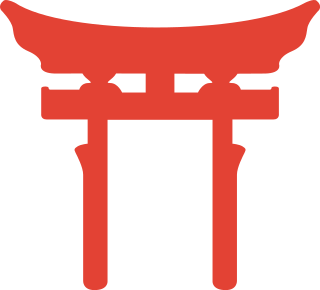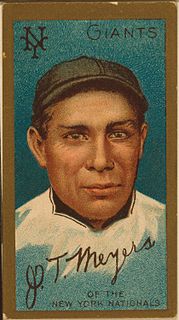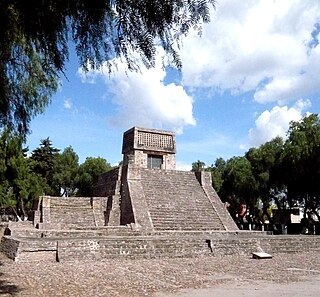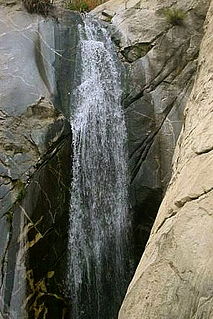Related Research Articles

A funeral is a ceremony connected with the final disposition of a corpse, such as a burial or cremation, with the attendant observances. Funerary customs comprise the complex of beliefs and practices used by a culture to remember and respect the dead, from interment, to various monuments, prayers, and rituals undertaken in their honor. Customs vary between cultures and religious groups. Common secular motivations for funerals include mourning the deceased, celebrating their life, and offering support and sympathy to the bereaved; additionally, funerals may have religious aspects that are intended to help the soul of the deceased reach the afterlife, resurrection or reincarnation.

Kami are the spirits, phenomena or "holy powers" that are venerated in the religion of Shinto. They can be elements of the landscape, forces of nature, as well as beings and the qualities that these beings express; they can also be the spirits of venerated dead people. Many kami are considered the ancient ancestors of entire clans. Traditionally, great or sensational leaders like the Emperor could be or became kami.
Pawnee mythology is the body of oral history, cosmology, and myths of the Pawnee people concerning their gods and heroes. The Pawnee are a federally recognized tribe of Native Americans, originally located on the Great Plains along tributaries of the Missouri and Platte Rivers in Nebraska and Kansas and now are currently in Oklahoma. They traditionally speak Pawnee, a Caddoan language. The Pawnees lived in villages of earth lodges. They grew corn and went on long bison hunts on the open plains twice a year. The tribe has four bands: the Skidi and "the South Bands" consisted of the Chawi, the Kitkahahki and the Pitahawirata Pawnee.

Duat is the realm of the dead in ancient Egyptian mythology. It has been represented in hieroglyphs as a star-in-circle: 𓇽. The god Osiris was believed to be the lord of the underworld. He was the first mummy as depicted in the Osiris myth and he personified rebirth and life after death. The underworld was also the residence of various other gods along with Osiris. The Duat was the region through which the sun god Ra traveled from west to east each night, and it was where he battled Apophis, who embodied the primordial chaos which the sun had to defeat in order to rise each morning and bring order back to the earth. It was also the place where people's souls went after death for judgment, though that was not the full extent of the afterlife. Burial chambers formed touching-points between the mundane world and the Duat, and the ꜣḫ "the effectiveness of the dead", could use tombs to travel back and forth from the Duat.

The ancient Egyptians believed that a soul was made up of many parts. In addition to these components of the soul, there was the human body.

The indigenous peoples of the Americas comprise numerous different cultures. Each has its own mythologies. Some are quite distinct, but certain themes are shared across the cultural boundaries.

The Ghost Dance was a new religious movement incorporated into numerous Native American belief systems. According to the teachings of the Northern Paiute spiritual leader Wovoka, proper practice of the dance would reunite the living with spirits of the dead, bring the spirits to fight on their behalf, end westward expansion, and bring peace, prosperity, and unity to Native American peoples throughout the region.

The Power of Myth is a book based on the 1988 PBS documentary Joseph Campbell and the Power of Myth. The documentary was originally broadcast as six one-hour conversations between mythologist Joseph Campbell (1904–1987) and journalist Bill Moyers. It remains one of the most popular series in the history of American public television.

Preta, also known as hungry ghost, is the Sanskrit name for a type of supernatural being described in Hinduism, Buddhism, Taoism, and Chinese and Vietnamese folk religion as undergoing suffering greater than that of humans, particularly an extreme level of hunger and thirst. They have their origins in Indian religions and have been adopted into East Asian religions via the spread of Buddhism. Preta is often translated into English as "hungry ghost" from the Chinese and Vietnamese adaptations. In early sources such as the Petavatthu, they are much more varied. The descriptions below apply mainly in this narrower context. The development of the concept of the preta started with just thinking that it was the soul and ghost of a person once they died, but later the concept developed into a transient state between death and obtaining karmic reincarnation in accordance with the person's fate. In order to pass into the cycle of karmic reincarnation, the deceased's family must engage in a variety of rituals and offerings to guide the suffering spirit into its next life. If the family does not engage in these funerary rites, which last for one year, the soul could remain suffering as a preta for the rest of eternity.

The Cahuilla Band of Cahuilla Indians of the Cahuilla Reservation is a federally recognized tribe of Native American Indians located in California. Their tribe originally came from Coachella Valley, through San Gorgonio Pass, to the San Jacinto Mountains. In 1875, their tribe had been relocated to modern day Anza.

The Aztec religion originated from the indigenous Aztecs of central Mexico. Like other Mesoamerican religions, it also has practices such as human sacrifice in connection with many religious festivals which are in the Aztec calendar. This polytheistic religion has many gods and goddesses; the Aztecs would often incorporate deities that were borrowed from other geographic regions and peoples into their own religious practices.
The traditional Maya religion of the extant Maya peoples of Guatemala, Belize, western Honduras, and the Tabasco, Chiapas, and Yucatán states of Mexico is part of the wider frame of Mesoamerican religion. As is the case with many other contemporary Mesoamerican religions, it results from centuries of symbiosis with Roman Catholicism. When its pre-Spanish antecedents are taken into account, however, traditional Maya religion has already existed for more than two millennia as a recognizably distinct phenomenon. Before the advent of Christianity, it was spread over many indigenous kingdoms, all after their own local traditions. Today, it coexists and interacts with pan-Mayan syncretism, the 're-invention of tradition' by the Pan-Maya movement, and Christianity in its various denominations.
The indigenous religion of the Pomo people, Native Americans from Northwestern California, centered on belief in the powerful entities of the 'Kunula', a Coyote, and 'Guksu', a spirit healer from the south.
Cahuilla traditional narratives include myths, legends, tales, and oral histories preserved by the Cahuilla people of the Colorado Desert and Peninsular Ranges of southern California.
A kamuy is a spiritual or divine being in Ainu mythology, a term denoting a supernatural entity composed of or possessing spiritual energy.

Egyptian mythology is the collection of myths from ancient Egypt, which describe the actions of the Egyptian gods as a means of understanding the world around them. The beliefs that these myths express are an important part of ancient Egyptian religion. Myths appear frequently in Egyptian writings and art, particularly in short stories and in religious material such as hymns, ritual texts, funerary texts, and temple decoration. These sources rarely contain a complete account of a myth and often describe only brief fragments.
Gurung Shamanism is arguable one of the oldest religions in Nepal. It describes the traditional shamanistic religion of the Gurung people of Nepal. There are three priest within the Gurungs which are Pachyu, Khlepree and Bonpo Lam. As the Gurungs didn't have a written language, the pronunciation of the word 'Pachyu' and 'Khlepree' are often different from one village to another. Pachyu are sometimes referred to as 'Poju or Pajyu' and Khlepree also known as 'Lhori or Ghyabri'. Bonpo Lam is the proper term for a Gurung Lama. The "Pachyu" is understood to be the first priest amongst the three priests followed by Khlepree and lastly the Bonpo Lam. Pachyu, Khlepree and Bonpo Lams' recite chants of ancient legends and myths. These sacred myths and legends within the Pe are historical events and stories which dates back to as early as the creation of Earth to stories which have occurred within the Gurungs societies as they migrated from Mongolia to Nepal.
Tahquitz is a spirit found in the legends of the Cahuilla, Kumeyaay and Luiseño Native American people of Southern California. Accounts of the legend vary significantly, but most agree that Tahquitz represents evil or death, and his spirit makes its home on Mount San Jacinto. Some accounts report that he steals people and/or their souls and devours them on the mountain. Tahquitz manifests himself in the form of fireballs, lighting, meteors and thunderous sounds on the mountain and in the canyons.

Tahquitz Canyon is located in Southern California in the Coachella Valley near Palm Springs, California. It has been continually inhabited for at least 2,000 years by the Cahuilla tribe of Native Americans. It is one of many canyons of cultural significance to the Agua Caliente Band of Cahuilla Indians.

Death in 19th-century Mormonism involved several unique religious rituals, cultural customs, and eschatological beliefs. In the years of the Church of Christ and, later, in The Church of Jesus Christ of Latter-day Saints, death played a prominent role in the lives of members due to various diseases, forced removal from settlements, the harsh nature of life on the American frontier, and the lack of medical knowledge at the time. Mormon mortality rates climbed through most of the century until a permanent settlement in Utah Territory was established and advances in medical science were made. Before these improvements, the commonality of death in Latter Day Saint communities produced a distinct culture surrounding the death of a member of the community. The dying were either blessed to be healed or to be received into heaven, depending on the person's wishes. A phenomenon is known as the "beautiful death" set forth traditions such as family and friends gathering around a person's deathbed to witness their transition into the next life. Nineteenth-century Latter Day Saints came to terms with the frequent deaths of loved ones – especially those of infants and children – by turning to the teachings offered by their religion.